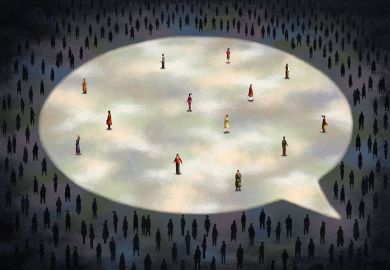I often wonder why it is that some writers have their lives embellished with a mystique while others, whose lives appear to me every bit as exotic or tragic or inspiring, never quite fire the popular imagination. Why has Marguerite Duras, brought up in French Indochina, spawned schools of starry-eyed book and thesis writers, while Pearl Buck, raised in China and a Nobel prize winner, has held almost no interest? Peter Conn, professor of English at the University of Pennsylvania, admits that he hesitated to take on Pearl Buck as a subject of research: "She seemed too risky an investment."
I doubt whether Buck's neglect by scholars has much to do with the quality of her writing, though Conn is clearly disconcerted by the wooden dialogue and weak characterisation in her fiction. Conn's biography leads me to the conclusion that the neglect has more to do with her subject matter (what her publisher, Richard Walsh, described as "the wall of prejudice against Chinese books") and her intensely moral vision - as unpopular in her own time as it is today.
Buck always seemed to fall between worlds. Her writing career had a spectacular start: The Good Earth, her second book, won the Pulitzer Prize in 1932. Her father and husband both considered any aesthetic pursuit such as novel writing trivial (and Buck herself privately inclined to this view), whereas in US literary circles it was precisely her lack of aestheticism that doomed her to the category of "popular". This was acceptable until that November day in 1938 when it was announced that Buck had won the Nobel prize for literature. She was the first US woman (and the fourth American) to win it.
Sadly, her international triumph set off an avalanche of hostile criticism from American writers and critics, who saw the Swedish Academy's decision as bad judgement. William Faulkner told a friend he no longer wanted a Nobel prize himself: "I had rather be in the same pigeon-hole with Dreiser and Sherwood Anderson, than with Sinclair Lewis and Mrs Chinahand Buck." Faulkner's comment shows that it did not help Buck that she was a woman, nor that she saw her writing as an opportunity to give voice to the women of China. For American writers, this was simply not serious subject matter.
Buck's father, Absalom Sydenstricker, was a farmboy from Virginia who took his young bride to China in 1880 to "tell the Chinese about Jesus", as his daughter put it. When Pearl was young she saw her determined, inflexible father as a hero. Unlike most of the American missionaries, he had mastered several Chinese dialects. For weeks on end, wearing Chinese clothes, he travelled by donkey from village to village, trying to save the Chinese heathens from burning in hell. His wife was left alone with their children, who died one after the other. As Conn points out, the Chinese did not care about Jesus. They deeply resented the white foreigners, who lived in an isolated compound, plagued by alcoholism, opium addiction and depression. Pearl, bilingual and lonely, never felt at home in either culture. She knew what it meant to belong to a despised racial minority. She also saw what it meant to be a woman. Her unhappy mother had sacrificed her life to a deeply misogynist man; her Chinese governess had three-inch bound feet; and more than once, when Pearl was out walking, she chased dogs away from the naked bodies of female babies abandoned in shallow graves.
When the Sydenstrickers went back to America from time to time to recover their health, no one was interested in their adventures. The first of a series of Chinese exclusion acts was passed in 1882, and these continued until 1943. Theodore Roosevelt openly described the Chinese as an "immoral, degraded and worthless race". This is what faced Pearl Buck, as she became after her first marriage. She waited until her father died before she passionately condemned missionaries. Their beliefs could not have been more different - Buck was anti-imperialist and non-racist to the core - but her indefatigable energy, courage and capacity for hard work resembled her father's. Father and daughter both seemed to flourish in the face of opposition.
Buck made herself unpopular by fighting America's exclusion and quota laws. During the war, she warned Franklin Roosevelt that a democratic country did not send Japanese American citizens to internment camps just because of their race; she became the leading American advocate of (east) Indian liberation. She attacked discrimination against African Americans in the armed forces; she condemned segregation in the United States; and she urged African Americans to join with coloured people the world over to fight white supremacy. "She demanded equality," Conn writes. "Between men and women, black and white Americans, Asians and Westerners."
Her fiction challenged the complacency of her western readers. She would comment, from an Asian perspective, on the peculiar smell of white Americans, with their strange diet of milk and butter and large quantities of meat. In her 1945 novel China Flight she has a Japanese officer order an American prisoner of war to pull his rickshaw -a symbol, for Buck, of imperialism. "Americans so enjoy the ricksha -pulled by Japanese," the officer tells the American. "Now you will doubtless enjoy it also, but between the shafts."
Buck's one child was mentally retarded -a sorrow and stigma she apparently never came to terms with. It was not until late in life that she admitted publicly the existence of her daughter, who had spent most of her life in an institution. The day before Buck sailed for Europe to receive her Nobel prize, she told her sister she would rather be having a baby. Buck's book The Child Who Never Grew (1950) helped transform American prejudices about mental illness. With Richard Walsh, who became her second husband, she adopted seven children, and among her dozens of activities she set up Welcome House, an adoption agency for children from all over the world. In so many respects, Buck was ahead of her time.
To understand Buck's life and work and the reception of her work, readers need to know something about Chinese history and culture and Sino-American relations; Conn fills in this background deftly. He has pursued his research with the energy and thoroughness that behoves his untiring subject, though the sheer detail is sometimes at the expense of narrative momentum.
Conn takes the view that Buck's best writing is probably her non-fiction: her autobiography (My Several Worlds), the biographies she wrote about her parents, The Exile and Fighting Angel, and her lively, polemical essays on race, women and war. He is eager not to claim that Buck is "the author of unjustly suppressed masterpieces". That's fine. She probably is not. But how many of us have her cross-cultural insights? How many of us have her moral fibre and courage? Why is she not shimmering with mystique?
Hazel Rowley is the author of a prize-winning biography of Christina Stead. She is researching a biography of Richard Wright.
Pearl S. Buck: A Biography
Author - Peter Conn
ISBN - 0 521 56080 2
Publisher - Cambridge University Press
Price - £35.00
Pages - 468



